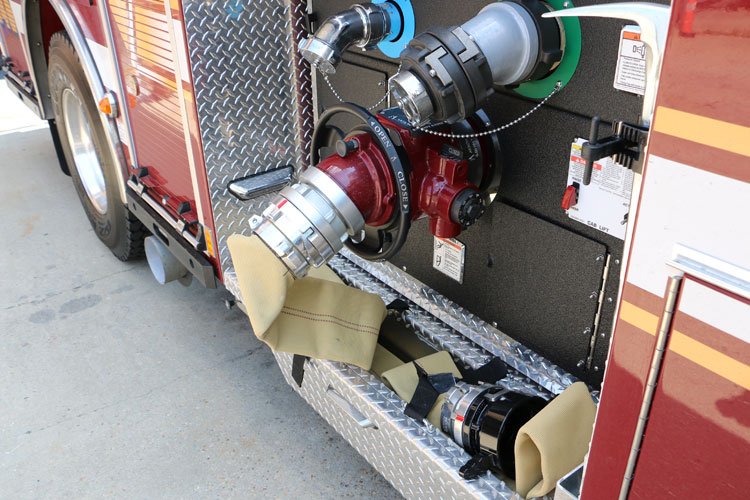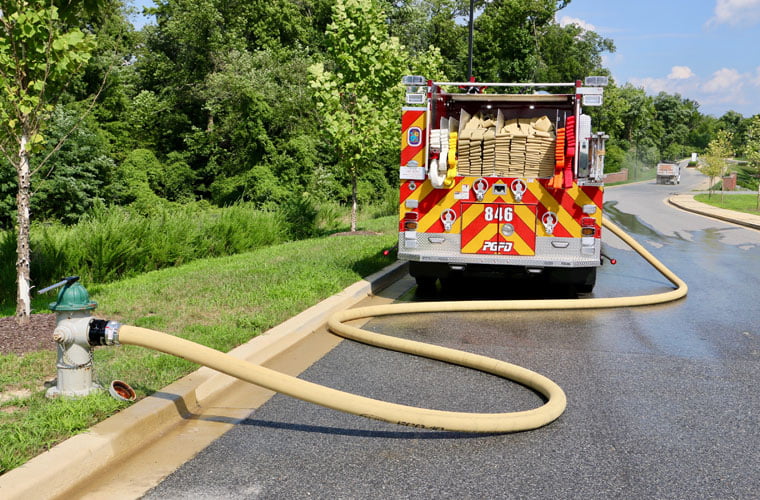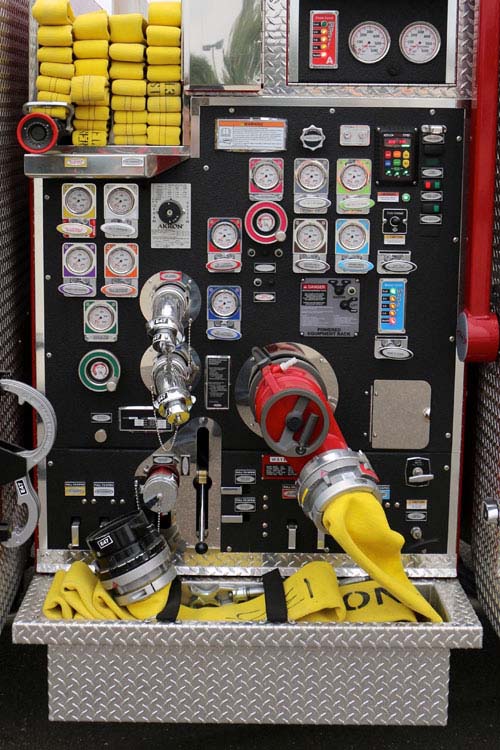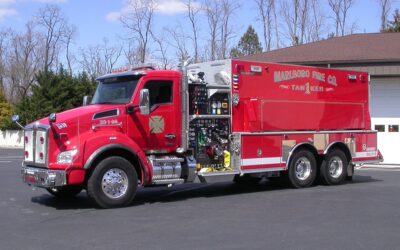By Ricky Riley
In past Rig articles and Fire Apparatus & Emergency Equipment articles, I have championed having numerous options for receiving water to your engine company. Making sure you have all the tools in the tool box to be able to supply the engine with water is one of the basic functions of being an engine company. Many departments have designed their apparatus for receiving water by adding front suctions and rear suctions. I am a believer in these options and have specified them on a number of rigs. But, let’s take a look at the front and rear suctions along with the side suction.
The front suction is a mainstay of Northeast fire departments, especially those that are equipped with a swivel. This inlet allows for quickly pulling up to the hydrant and connecting the front soft sleeve to the hydrant. With the addition of the swivel, it makes it even easier to not have any kinks. With today’s new apparatus, all the cabs tilt, limiting the options we had just a few years ago for the front bumper. Normally we can add one front suction along with a front discharge because of the way manufacturers need to run the piping to the front of the apparatus. When adding the front suction, it also adds the extra weight of the pipe, which can be a couple hundred pounds to one side of the rig. Depending on what your department wants to accomplish with your front bumper, the front suction can take up a lot of real estate on the front between the pipe, swivel, and hose storage. And of course, as with almost all options it costs money.
The rear suction is another option to receive water. This option is regaining popularity as a way to position the engine to allow for better street access for other responding units and is also a way to better position the rear of the hosebed for deployment of handlines off the rear of the apparatus. This option requires the manufacturer to run a pipe from the fire pump down the apparatus to the rear. Depending on a number of factors in the apparatus build, this can raise the hosebed up a number of inches and, of course, cost money because of the design option.
Both of these designs are solid options for any engine company layout, and I have seen them used with great success. This success is hinged on the training and capabilities of the engine driver. Regardless of how busy or how slow your department is, it will always require practice.
An officer’s side setup with Akron Revolution Valve and 40 feet of 4-inch hose.
One of the options that we have been recently seeing used in place of these two options is the side suction. Side inlets are standard on almost all engines—the six-inch inlets that are on each side of your pumping apparatus. To make these inlets work for you, the department will just need to add a couple items to assist in setting them up for an operational advantage.
The inlets will need to be controlled using a manual valve, air-operated valve, or and electric valve. All these can vary in prices and dependability depending on the manufacturer. We recently did a Fire Apparatus & Emergency Equipment Viewpoints column on the pros and cons of electric/air valves compared to manual valves. I urge you to read that as it relates to the valves.
Here, the engine pulled past and sleeved hydrant, with extra hose under rear step and out of the street.
So, I will just give you some setups that I have specified on some rigs to help with this water intake. When operating with the side intake, we wanted to operate with more manual valves than electric/air valves and went with a commercial available manual piston intake valve, most recently using the Akron Revolution valve. Specifying storage for the hose right below that valve is also important, and the hose has to be the right size to provide the correct flow from your hydrant, along with the right length to reach the rear and front of the apparatus. If you do this setup on both sides, it offers the driver some choices on how to position the rig and position the hose to minimize blocking the street for later arriving apparatus to the scene. If your department still uses three-inch supply line, you can still do the two large intakes on each side with hose stored below, and you can specify three-inch inlets on your fire pump to accommodate your three inch-lines. As stated before, positioning skills for the apparatus and hose has to come with repetition, practice, and driver ingenuity.
This driver’s side setup has the piston intake valve and 30 feet of 5-inch hose in a trough.
We are not saying that one option is better than the next one—it is obviously up to each individual department on how it wants to operate and specify its apparatus. But as we have always said, options are a good thing. Always be looking at what other departments are doing to see if it can work in your response area. Don’t be married to what you have always done—look for the best way to do our business. In this case, it is receiving water.
RICKY RILEY is the president of Traditions Training, LLC. He previously served as the Operations Chief for Clearwater (FL) Fire & Rescue and as a firefighter for Fairfax County (VA) Fire & Rescue. He also currently serves as the rescue engine captain at the Kentland (MD) Volunteer Fire Department. He also is a member of the Fire Apparatus & Emergency Equipment editorial advisory board.









